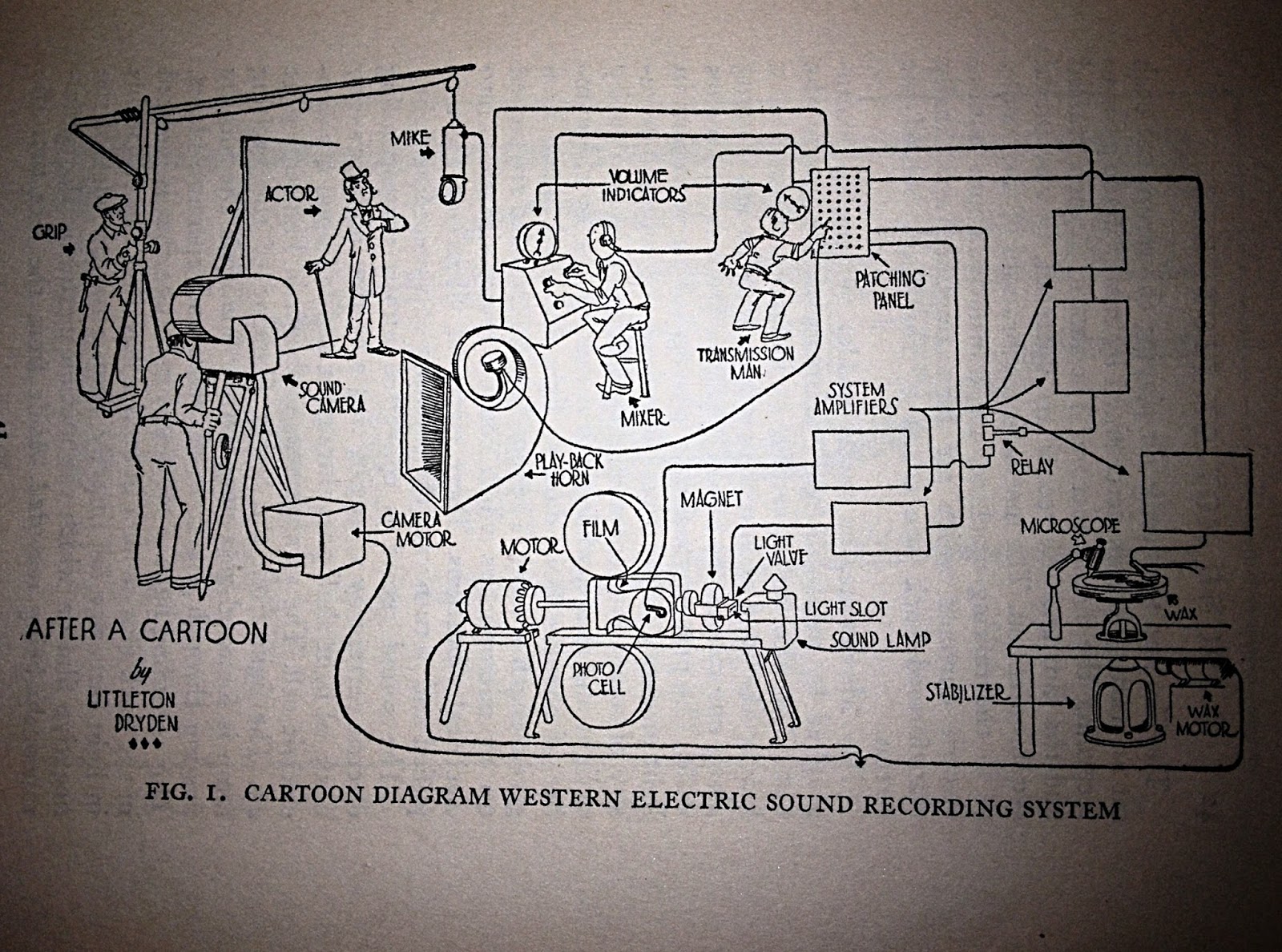The first of these concerns the potential evolution of technology which was, in real terms, very much in its infancy:
Eventually science will certainly develop telephony and television beyond our present imaginative expectations. When they are fully developed a person sitting at home may be "present" at any event, regardless of distance, at will. Stereoscopic television in full natural colours, and perfected wireless telephony, will enable him to see and hear any event that is broadcast as effectively as if he stood beside the transmitting apparatus.
Here Franklin is clearly describing what we would recognise today as 3D, HD television. In many ways an impressive and accurate prediction, but one wonders whether or not he would have been surprised at just how long it took for this technology to become a reality?
If accurate, the second of the author's speculations offers a curious insight as to the mentality of early cinema-goers:
The dialogue motion picture is also likely to have an interesting effect on the theatregoing habits of its public. While it has meant nothing, until now, to drop in on a picture after it started and then pick up the threads of the story as it progressed, in the case of the talking picture it becomes more important for the audience to be present from the beginning.
It's hard to imagine, for example, anyone coming in late to one of the films mentioned in the previous blog, Sherlock Jnr., and being able to 'pick up the threads'. It would be really interesting to know whether this attitude to late-coming (an absolute pet hate of mine!) was as prevalent as Franklin suggests and if/how the coming of sound affected it. Certainly the noise created by the tardy could potentially cause more disruption and even affect understanding of the plot, even for those who had seen it from the beginning, but as for sound making it more difficult to catch up with the story I'm not so sure. Interesting talking point though.
The next prediction, regarding 3D cinema, is quite lengthy but worth the effort:
Dr. Herbert E. Ives of the Bell Telephone Laboratories has evolved a plan wherein a spectator at one side of the theatre sees a different side of a certain object than is viewed by another spectator on the opposite side of the room. Thus he gives the illusion of solid objects in space instead of flat images on a flat surface. The apparatus necessary to attain the desired effect, however, is both cumbersome and costly. To obtain the result, projection is placed behind the screen, which is transparent; and the spectator is seated on the opposite side of the scree. Both sides are blanketed with grids of opaque lines and open spaces that pass the light in narrow parallel bands. The projectors behind the screen are arranged in a semicircle. All of them render, simultaneously, views of the same scene taken at one time by a battery of cameras arranged to focus on their objective from different angles. Using the present motion picture camera, it is necessary to take sixty images each from a slightly different angle; the procedure requires fifteen cameras with four moving lenses, each photographing about eighty pictures a second- more than four times the ordinary rate of speed. The sixty images taken are then all condensed upon a single film.
Both the potential effect of this, as well as the logistics involved, are just mind-blowing!
Stereoscopic imagery was, even in 1929, nothing new. Indeed the stitching together of stereoscopic photographic images was an integral part of the evolution of cinema, given that both techniques had been perfected by Eadweard Muybridge in the late 19th century. Indeed Muybridge's influence is also apparent here with the description of the various cameras at different points sounding very much like his early attempts to capture motion.
The use of sequential imagery from synchronised still cameras was later used to create the 'bullet time' effects of The Matrix (1999) but what Franklin was describing here would have produced something more akin to a 3D-looking hologram. If incorporating sound had presented studios with challenges just imagine how difficult it would have been to make films which had to be shot a several different angles simultaneously. The lighting alone would have given any cinematographer nightmares and filming fast moving cars on location would have been nearly impossible! And that's not taking into account the expense of upgrading all the theatres.... Still, it is interesting to think that way back in 1929, at the very beginnings of sound motion pictures, someone was looking to make cinema an even more involving and 'real' experience.
Dr. Ives' is perhaps best known for his work on television and telephony but his main area of expertise was optics and you can learn more about his plans for stereoscopic cinema here.











